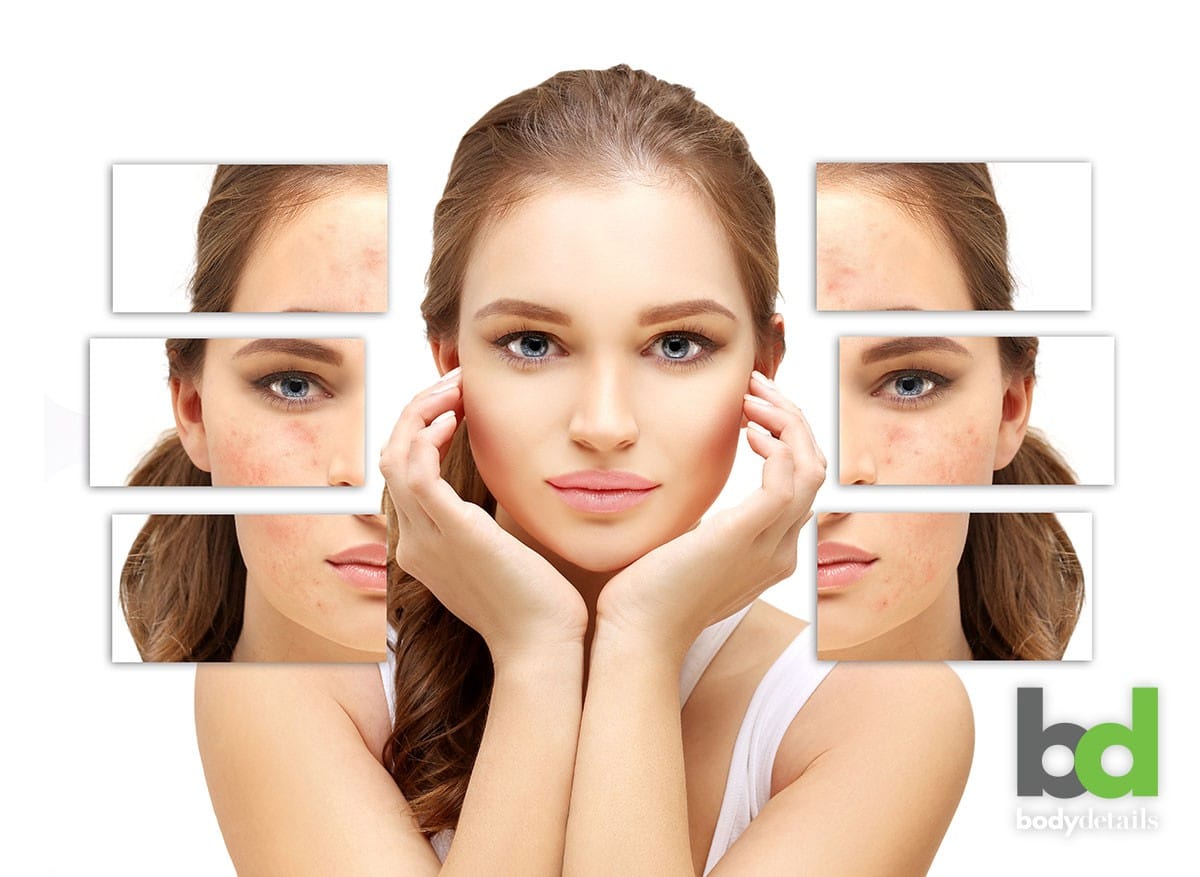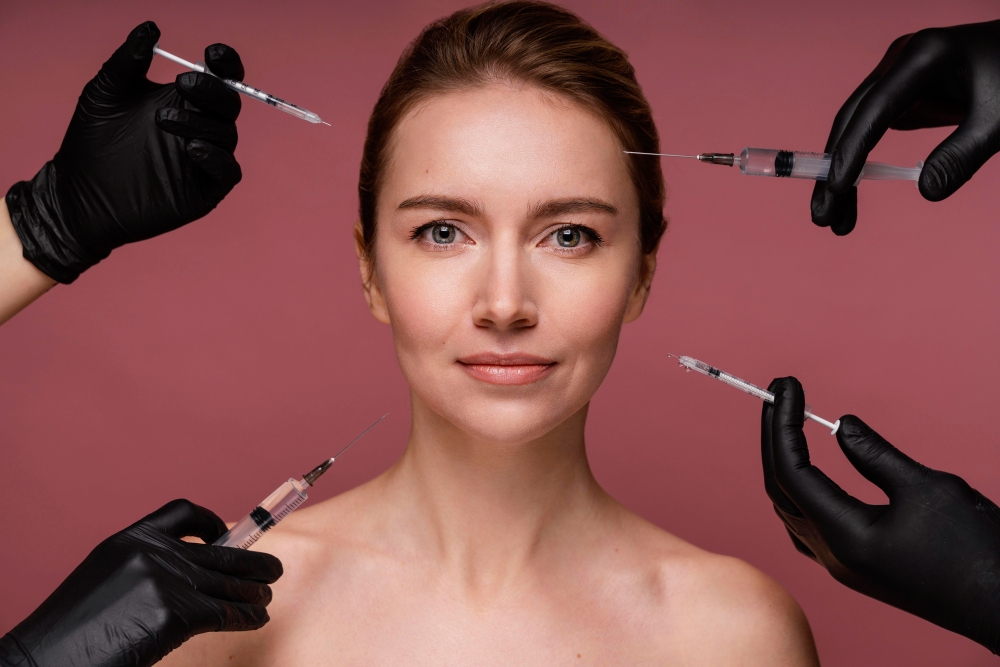Acne scars can be a persistent and frustrating skin issue, impacting self-esteem and overall appearance. If you’re considering professional treatments in Dubai to address these scars, understanding the timeline for seeing results can help manage expectations and plan accordingly. This comprehensive guide explores various Acne Scars Treatment in Dubai, their effectiveness, and how long it typically takes to see noticeable improvements.
Table of Contents
ToggleUnderstanding Acne Scars
Before diving into treatment timelines, it’s essential to understand the different types of acne scars, as this influences the choice of treatment and the expected timeframe for results.
Types of Acne Scars
- Atrophic Scars: These are depressed scars that sit below the surrounding skin tissue. They include:
- Ice Pick Scars: Deep, narrow scars that look like small holes.
- Boxcar Scars: Broad, rectangular depressions with well-defined edges.
- Rolling Scars: Wavy depressions with a rolling or undulating appearance.
- Hypertrophic Scars: These are raised scars that sit above the surrounding skin. They are often thicker and can be more challenging to treat.
- Keloid Scars: These are a type of hypertrophic scar but extend beyond the original wound site, growing aggressively. They are often thicker and more raised.
Understanding the type of acne scar you have is crucial, as it determines the most effective treatment method and influences the timeline for seeing results.
Popular Acne Scar Treatments in Dubai
Dubai is renowned for its advanced dermatological and cosmetic clinics, offering a variety of cutting-edge treatments for acne scars. Here’s a detailed look at some of the most popular treatments and their expected timelines for results.
Fractional Laser Resurfacing
Fractional laser resurfacing is one of the most effective treatments for acne scars. It works by creating microscopic wounds in the skin, which stimulates collagen production and new skin cell growth.
- Procedure: The laser creates tiny columns of thermal damage, leaving surrounding tissue intact to aid in quicker healing.
- Timeline for Results:
- Immediate: Skin may appear red and swollen immediately after the treatment.
- Short-term (1-2 weeks): Initial improvement in skin texture as the skin begins to heal.
- Mid-term (1-3 months): Noticeable reduction in scar depth and improved skin texture.
- Long-term (3-6 months): Continued improvement as collagen production increases, with optimal results seen around 6 months post-treatment.
Radiofrequency Microneedling
Radiofrequency (RF) microneedling combines traditional microneedling with RF energy to enhance collagen production and skin tightening.
- Procedure: Tiny needles create micro-injuries in the skin while RF energy is delivered to deeper layers, stimulating collagen and elastin production.
- Timeline for Results:
- Immediate: Minor redness and swelling post-treatment.
- Short-term (1-2 weeks): Initial skin texture improvement and tightening.
- Mid-term (1-3 months): Significant reduction in scar visibility and improved skin elasticity.
- Long-term (3-6 months): Continued collagen production leads to further skin tightening and scar reduction, with peak results around 6 months.
Platelet-Rich Plasma (PRP) Therapy
PRP therapy involves using the patient’s own blood to extract plasma rich in growth factors, which is then injected into the scarred areas to promote healing and regeneration.
- Procedure: Blood is drawn from the patient, processed to extract PRP, and then injected into the targeted areas.
- Timeline for Results:
- Immediate: Minor swelling or redness at injection sites.
- Short-term (2-4 weeks): Gradual improvement in skin texture and tone.
- Mid-term (1-3 months): Enhanced collagen production leads to noticeable scar reduction.
- Long-term (3-6 months): Continued skin regeneration with optimal results seen around 3-6 months.
Chemical Peels
Chemical peels use a specialized solution to exfoliate the outer layers of the skin, encouraging new cell growth and reducing scar appearance.
- Procedure: The peel solution is applied to the skin, causing controlled exfoliation and peeling.
- Timeline for Results:
- Immediate: Skin may appear red and flaky as the peel takes effect.
- Short-term (1-2 weeks): Initial improvement in skin tone and texture.
- Mid-term (1-3 months): Noticeable reduction in superficial scars and improved skin smoothness.
- Long-term (3-6 months): Continued improvement in deeper scars with multiple sessions.
Dermal Fillers
Dermal fillers involve injecting substances like hyaluronic acid into depressed scars to lift and smooth the skin surface.
- Procedure: Fillers are injected into the scarred areas to elevate the depressed skin to the level of surrounding tissue.
- Timeline for Results:
- Immediate: Instant improvement in skin smoothness and scar visibility.
- Short-term (1-2 weeks): Full settling of the filler with improved skin texture.
- Mid-term (3-6 months): Fillers maintain skin smoothness, though touch-ups may be required.
- Long-term (6-12 months): Regular maintenance treatments are needed to sustain results.
Cryotherapy
Cryotherapy uses liquid nitrogen to freeze and destroy scar tissue, allowing new, healthy skin to replace it.
- Procedure: Liquid nitrogen is applied to the scar tissue, causing controlled damage and subsequent healing.
- Timeline for Results:
- Immediate: Treated areas may appear red and swollen.
- Short-term (1-2 weeks): Initial healing with scab formation and peeling.
- Mid-term (1-3 months): Gradual improvement in scar appearance as new skin forms.
- Long-term (3-6 months): Continued improvement with optimal results around 3-6 months post-treatment.
Stem Cell Therapy
Stem cell therapy involves using the patient’s own stem cells to promote natural healing and regeneration of scarred skin.
- Procedure: Stem cells are harvested from fat tissue or bone marrow and injected into the scarred areas.
- Timeline for Results:
- Immediate: Minor swelling or redness at injection sites.
- Short-term (1-2 weeks): Initial improvement in skin texture.
- Mid-term (1-3 months): Noticeable reduction in scar visibility and enhanced skin regeneration.
- Long-term (3-6 months): Continued improvement as stem cells promote ongoing healing and collagen production.
Pico Laser Technology
Pico lasers deliver ultra-short pulses of energy to break down scar tissue without damaging surrounding skin, resulting in faster healing and less downtime.
- Procedure: Pico laser pulses are directed at the scar tissue to stimulate collagen production and skin regeneration.
- Timeline for Results:
- Immediate: Minor redness and swelling post-treatment.
- Short-term (1-2 weeks): Initial improvement in skin texture.
- Mid-term (1-3 months): Significant reduction in scar visibility and improved skin tone.
- Long-term (3-6 months): Continued collagen production leads to further skin improvement, with peak results around 3-6 months.
Ultrasound Therapy
Ultrasound therapy uses high-frequency sound waves to penetrate deep into the skin, stimulating collagen production and tightening the skin.
- Procedure: Ultrasound energy is delivered to the deeper layers of the skin to promote collagen synthesis and skin tightening.
- Timeline for Results:
- Immediate: Minor redness or swelling may occur.
- Short-term (1-2 weeks): Initial tightening and improvement in skin texture.
- Mid-term (1-3 months): Noticeable reduction in scar depth and enhanced skin smoothness.
- Long-term (3-6 months): Continued collagen production leads to optimal results around 3-6 months post-treatment.
Factors Influencing Treatment Timelines
Several factors can influence how quickly you see results from acne scar treatments. These include:
Severity of Scarring
The severity and type of acne scars play a significant role in determining the treatment timeline. Deep, extensive scarring may require multiple sessions and a longer duration to achieve noticeable results compared to mild, superficial scars.
Skin Type and Condition
Your skin type and overall condition can affect the healing process and the time it takes to see results. For instance, individuals with sensitive skin may experience longer recovery times, while those with resilient skin might see improvements sooner.
Treatment Type
Different treatments have varying mechanisms of action and recovery periods. For example, laser treatments and microneedling often require several sessions spaced weeks apart, while fillers can provide immediate results but may need regular maintenance.
Aftercare and Lifestyle
Proper aftercare is crucial for optimal results and quicker recovery. Following your dermatologist’s post-treatment instructions, using recommended skincare products, and maintaining a healthy lifestyle can significantly impact the timeline for seeing results.
Combination of Treatments
In many cases, a combination of treatments is necessary to achieve the best results. Combining therapies like microneedling with PRP or laser treatments with chemical peels can synergistically enhance outcomes and shorten the overall treatment timeline.
Patience and Persistence
It’s essential to approach acne scar treatment with patience and realistic expectations. While some improvement may be visible early on, significant results often take time to manifest fully. Consistency with treatments and adherence to recommended follow-up appointments are key to achieving optimal outcomes.
General Timeline for Acne Scar Treatment
While the exact timeline for seeing results varies depending on individual factors and treatment modalities, here’s a general overview of what to expect:
- Immediate Results: Some treatments may yield immediate improvements in skin texture or tone, such as after a chemical peel or filler injection. However, these initial changes are often temporary and may require multiple sessions for sustained results.
- Short-term Results (1-2 weeks): Within the first few weeks post-treatment, you may notice subtle changes in skin texture and tone as the skin begins to heal. Any initial redness, swelling, or peeling typically resolves during this time.
- Mid-term Results (1-3 months): Significant improvements in scar visibility and skin texture become more apparent during this phase. Collagen production increases, leading to continued skin regeneration and smoothing of scars.
- Long-term Results (3-6 months): Continued collagen remodeling and skin regeneration contribute to further refinement of scars and overall skin quality. By this point, optimal results from the chosen treatment(s) should be evident, though some treatments may require additional sessions for maximal effect.
- Ongoing Maintenance (6+ months): While acne scar treatments can yield long-lasting results, periodic maintenance may be necessary to sustain improvements. This may include touch-up treatments, skincare adjustments, or occasional follow-up appointments with your dermatologist.
Conclusion!
The journey to clearer, smoother skin through acne scar treatment in Dubai requires patience, commitment, and guidance from experienced skincare professionals. By understanding the timeline for seeing results and the factors that influence treatment outcomes, you can approach the process with realistic expectations and confidence in achieving your desired aesthetic goals.



